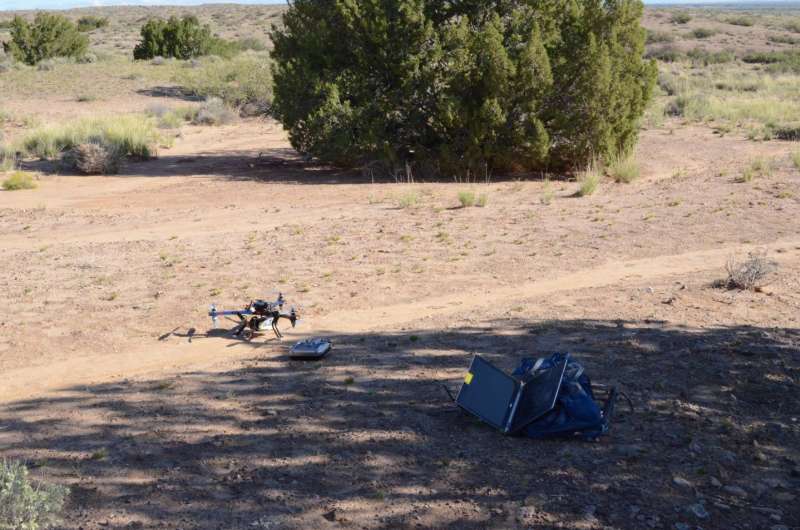New cheap method of surveying landscapes can capture environmental change

Cheap cameras on drones can be used to measure environmental change which affects billions of people around the world, new research from the University of Exeter shows.
Experts have developed a new way of surveying vegetation which greatly advances the tools available to ecologists and land managers seeking understand dryland ecosystems.
Using standard 'point and shoot' cameras attached to a drone and programmed to take pictures automatically, the 3D structure of the environment can be measured much more accurately than is possible using expensive satellite equipment or surveying these areas in person on the ground.
Dryland ecosystems cover 40 per cent of the Earth's surface. They provide services such as food, water and biofuel which support 2.4 billion people. These ecosystems are dynamic, changing through time, and it is essential that these changes are measured to understand the role of drylands in modulating climate change.
Recent research suggests that dryland ecosystems might play an important part in dryland exchange and this new surveying method will allow these new theories to be tested.
Experts from the University of Exeter collected 3D images of Sevilleta National Wildlife Refuge in Central New Mexico, USA using the $3,000 system. The data collected shows the subtle differences in the structure of vegetation and demonstrates how drones have the potential to revolutionise scientific understanding of ecology in these ecosystems.
Surveying areas in this way could reduce uncertainty in biomass inventories and allow previously unfeasible experiments to take place. It can also be used to increase knowledge about changing ecosystems in other places.
Andrew Cunliffe, from the College of Life and Environmental Sciences, who led the study, will now use the techniques to measure vegetation in the changing Canadian arctic.
He said: "We have shown you can use inexpensive equipment to better measure plants and how they change over time and space. The nature of dryland ecosystems with many small plants means it is difficult to measure the vegetation in these places using previously available monitoring techniques."
"This technique bridges the gap between satellite and on-the-ground methods. It is a tool to help us further understand climate systems and what changes are happening now, and what could happen in the future."
'Ultra-fine grain landscape-scale quantification of dryland vegetation structure with drone-acquired structure-from-motion photogrammetry' is published in Remote Sensing of Environment.
More information: Andrew M. Cunliffe et al, Ultra-fine grain landscape-scale quantification of dryland vegetation structure with drone-acquired structure-from-motion photogrammetry, Remote Sensing of Environment (2016). DOI: 10.1016/j.rse.2016.05.019 , www.sciencedirect.com/science/ … ii/S0034425716302206
Provided by University of Exeter



















